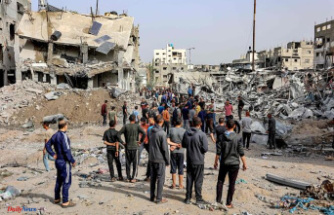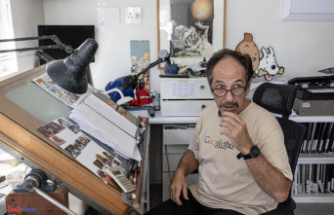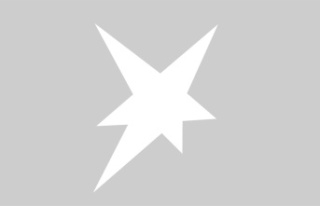It wasn't until the end of July that drawings at the Documenta caused a real scandal. Images from an archive on the Algerian women's movement showed dehumanized Israeli soldiers as robots or with a large hooked nose. The Kunstschau examined the pictures exhibited in the Fridericianum, but did not see any depiction of Jews “as such” – a “contextualisation” of the pictures shown was promised.
This classification has been available in Kassel since Monday and is also available to WELT. More are still being prepared, the Documenta reports.
The paper was written by the artist group "Archives des luttes des femmes en Algérie" itself. One regrets the "accusations" that the publication of the feminist magazine "Présence de femmes" from 1988 and the drawings by Burhan Karkoutly and Naji Al- would have dragged Ali after them.
The images were met with "misunderstandings" and became "the subject of misinterpretations by the media" and by visitors: "But the images are not aimed at Jews as individuals or as a community, they criticize the Israeli army," write the artist.
Karkoutly's first drawing illustrates a story from a children's book by Palestinian writer Ghassan Kanafani, which tells a "pre-Nakba incident": "Jewish militias stand in the way of a group of Palestinians, brutally murder and coerce them a child to watch the horrific events," the summary said. The Israeli historians Benny Morris and Ilan Pappé "documented minutely such massacres committed by Zionist militias".
The Arabic word "Nakba" (in English: catastrophe) describes the founding of the Israeli state and the expulsion associated with it. Those images show Israeli soldiers, dehumanized to resemble robots, pointing a gun at a young man and pinching a child. Kanafani's leading membership in the terrorist organization Popular Front for the Liberation of Palestine (PFLP), which is also responsible for attacks on Israeli civilians, is not mentioned.
A second drawing also attracted massive criticism. It shows a woman kicking what appears to be an Israeli soldier between the legs. This is marked with a Star of David on the helmet, has a small build and a large hooked nose.
"Archives des luttes des femmes en Algérie" sees no problem with this. The drawing by Palestinian artist Naji Al-Ali illustrates a story about the "exodus of the Palestinians during the Nakba" and depicts the "Palestinian popular uprisings" that led to the 1987 Intifada. So she expresses the "resilience and mobilizing power of the protest against the Israeli military" and emphasizes the role of the Palestinian woman in it. Not a word about the hooked nose and the physique of the drawn soldier.
Rather, one sees oneself confronted with "unfounded and defamatory allegations of anti-Semitism" and a "campaign" by the media. The artists criticize the "scandal-hungry reporting" and see themselves exposed to threats: "The actions of the media not only harm our project, but also endanger us as individuals."
The criticized images had meanwhile been removed from the exhibition and examined by the Documenta. After no anti-Semitism was recognized in them, they were laid out again.
"These are historical documents that should first of all be understood as such," emphasizes the group. The exhibits are only provided with keywords for cataloguing, they do not want to be censored. That would contradict their own claim of "sharing and the unhindered dissemination of documents and knowledge," they say.
Rather, they see themselves as archivists who wanted to create a digitized archive and thus "enable access to previously neglected and therefore little-known material". According to the artists, this helps “to analyze, understand and critically examine the struggle of Algerian women for more rights and emancipation as part of contemporary history”.
"This six-page manifesto shows that the imbalance at the Documenta is getting worse and worse," criticizes Susanne Urban from the Research and Information Center for Antisemitism Hessen (Rias Hessen). "Instead of dealing with the criticism of anti-Semitism expressed, it is claimed that the critics simply do not understand the context of the pictures," Urban told WELT.
The reference to criticism of the State of Israel is wrong. "Israeli soldiers are portrayed as monsters: This is not criticism of a single action, this is a blanket dehumanization and demonization, as has been the case for centuries," says the scientist. The recourse to "century-old anti-Semitic imagery" such as the depiction of an Israeli soldier with a hooked nose remains unmentioned.
Urban also criticizes the "decontextualization" of Ghassam Kanafanis by concealing his PFLP membership. "It shows where you stand politically."
"Kick-off Politics" is WELT's daily news podcast. The most important topic analyzed by WELT editors and the dates of the day. Subscribe to the podcast on Spotify, Apple Podcasts, Amazon Music, among others, or directly via RSS feed.












